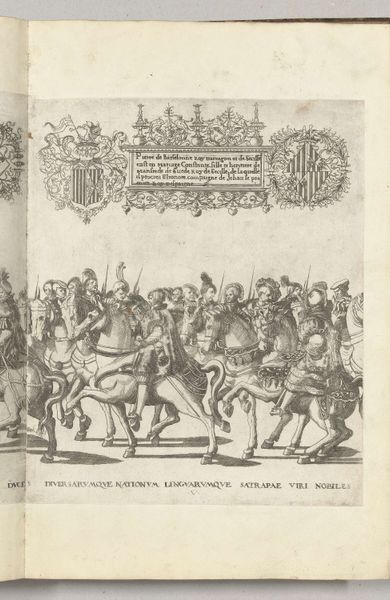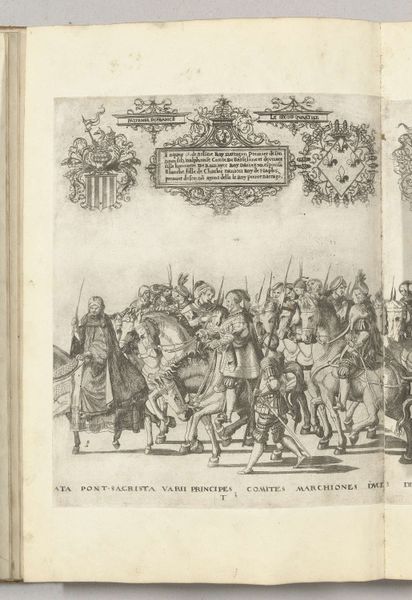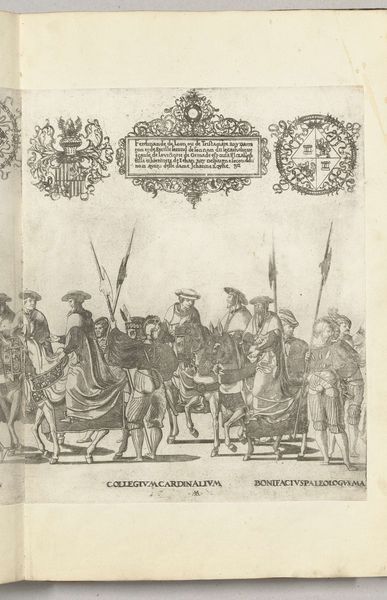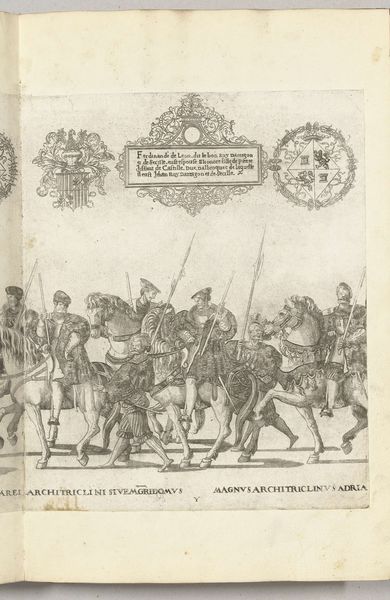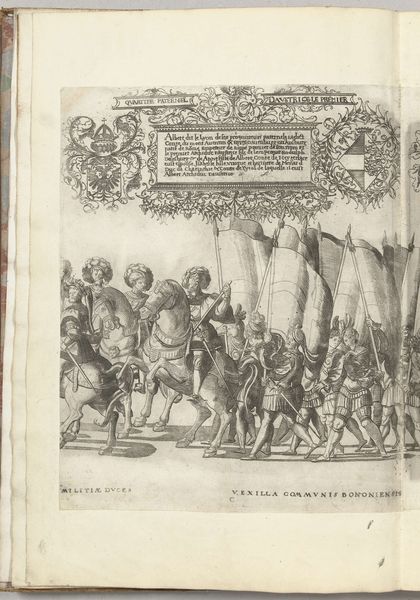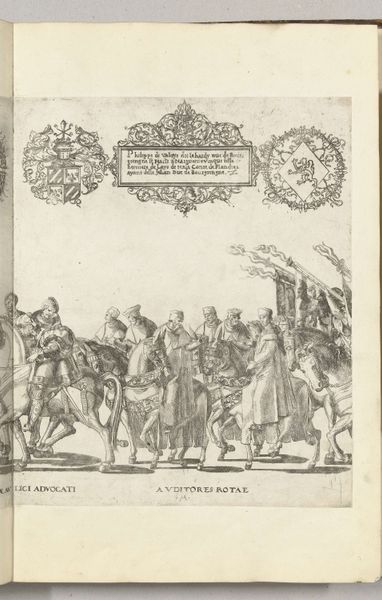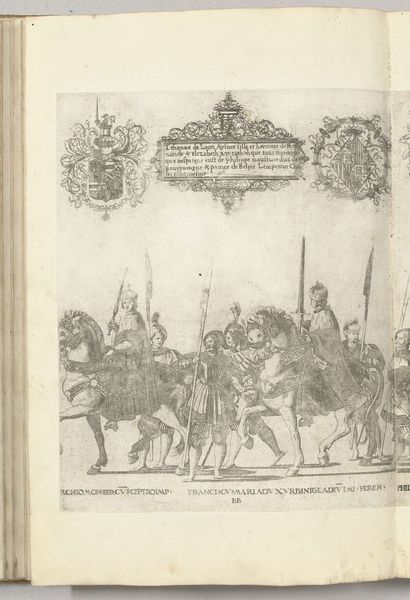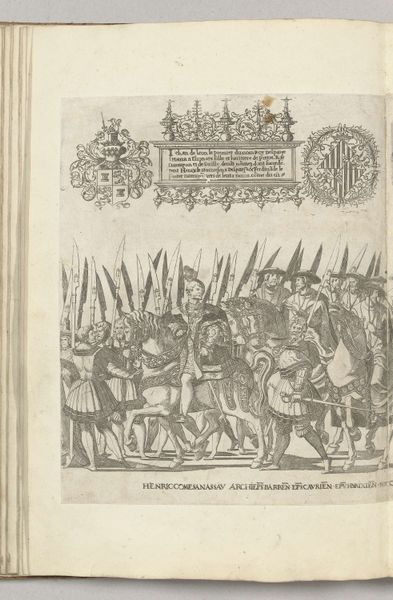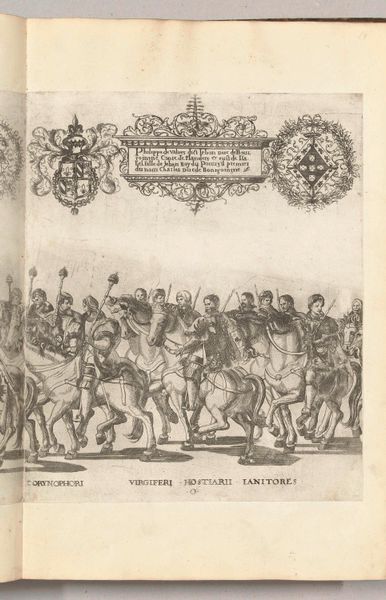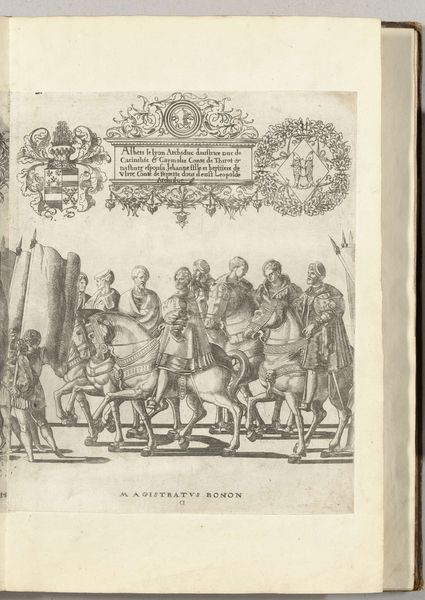
drawing, print, engraving
#
drawing
# print
#
landscape
#
figuration
#
11_renaissance
#
northern-renaissance
#
engraving
Dimensions: height 360 mm, width 295 mm
Copyright: Rijks Museum: Open Domain
Editor: Here we have “Vaandeldragers en kanunninken, plaat F”, made between 1530 and 1536 by Nicolaas Hogenberg, an engraving, a type of print. It depicts a formal procession. The men all seem quite serious, almost solemn. What's the story behind this type of imagery at this point in history? Curator: This engraving offers a glimpse into the socio-political landscape of the 16th century. Processions like this were carefully staged events. Ask yourself: what is being communicated through this imagery? How are the individuals presented, and what does their attire and positioning suggest about their status and power? Editor: Well, their clothing does set them apart, but what about those symbols floating above? Curator: Exactly. Those emblems and heraldic devices are not merely decorative. Consider their strategic placement, commanding our attention and imbuing the scene with layers of meaning. How might this imagery reinforce or challenge existing social hierarchies? Editor: I suppose the print is really about the power of these leaders at that moment, trying to reinforce their role by printing and circulating this. What does that say about Hogenberg's position at the time? Curator: Precisely! Hogenberg, as the artist, becomes an active participant in the dissemination of power. Understanding the public role of art in the Renaissance is crucial here. Ask yourself, was Hogenberg commissioned? Did he have other motivations? Editor: I've never really thought of art having this direct of a political goal before the modern era. I guess I am accustomed to more hidden critiques or personal works that find social meaning later on. Curator: That’s an excellent observation. Renaissance art, particularly in print form, often served a more overt public function than we might initially assume. Think about the Reformation unfolding at the same time, and the politics of imagery became absolutely essential. Editor: I'm leaving with a much broader understanding of how historical forces were shaping art then. Curator: As am I. The very act of examining this engraving allows us to understand how political power utilized visual representation.
Comments
No comments
Be the first to comment and join the conversation on the ultimate creative platform.
